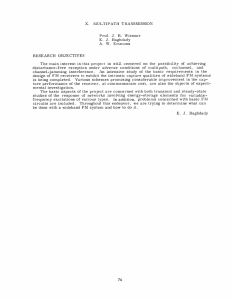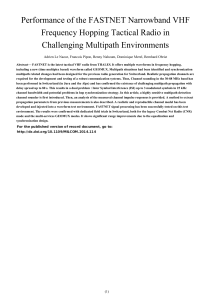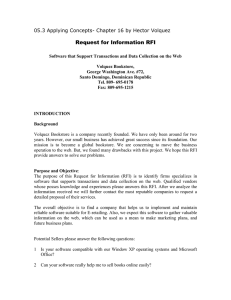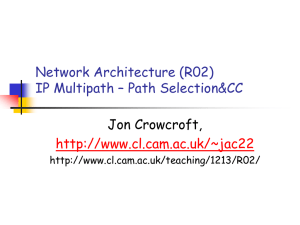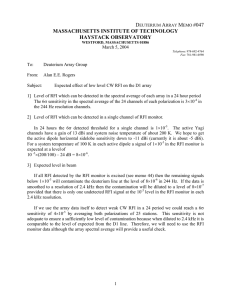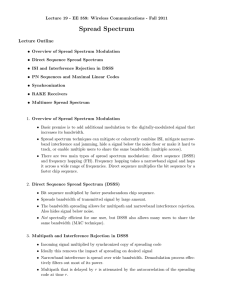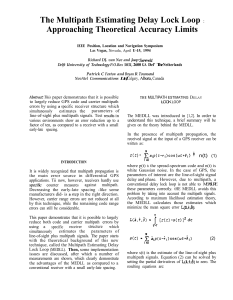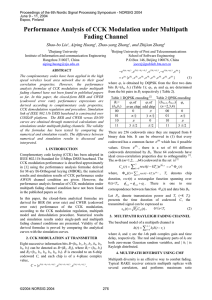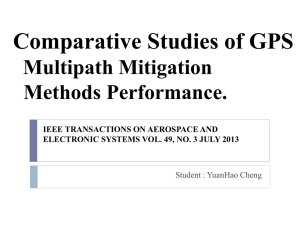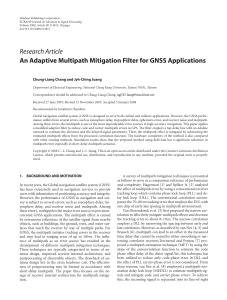D A M #048
advertisement
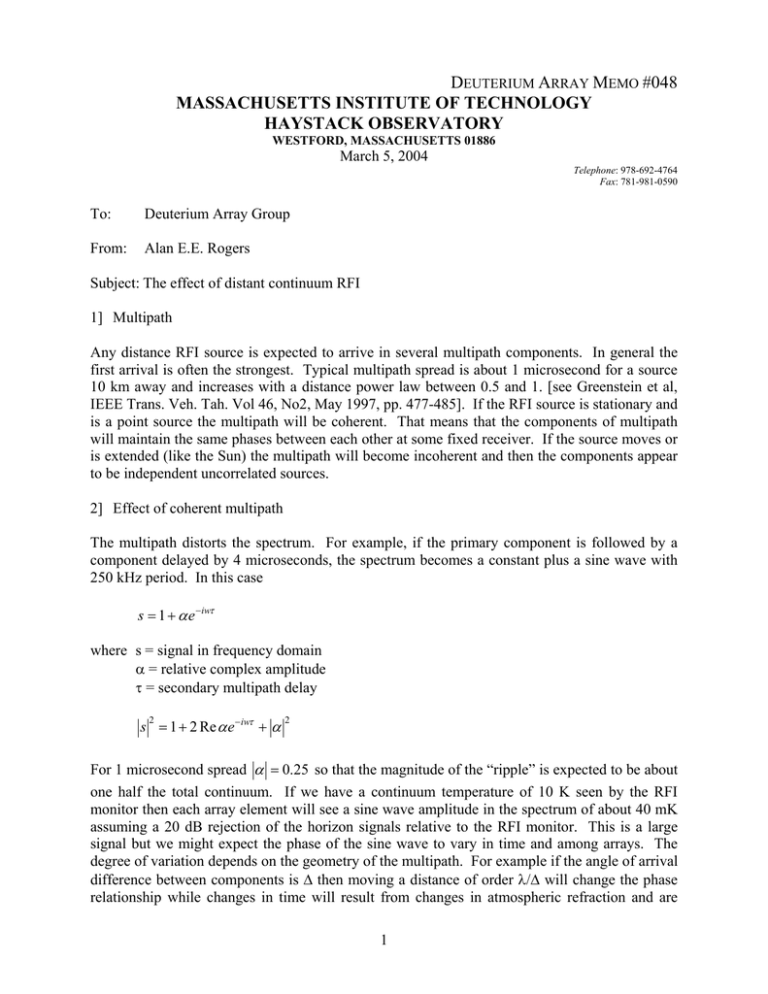
DEUTERIUM ARRAY MEMO #048 MASSACHUSETTS INSTITUTE OF TECHNOLOGY HAYSTACK OBSERVATORY WESTFORD, MASSACHUSETTS 01886 March 5, 2004 Telephone: 978-692-4764 Fax: 781-981-0590 To: Deuterium Array Group From: Alan E.E. Rogers Subject: The effect of distant continuum RFI 1] Multipath Any distance RFI source is expected to arrive in several multipath components. In general the first arrival is often the strongest. Typical multipath spread is about 1 microsecond for a source 10 km away and increases with a distance power law between 0.5 and 1. [see Greenstein et al, IEEE Trans. Veh. Tah. Vol 46, No2, May 1997, pp. 477-485]. If the RFI source is stationary and is a point source the multipath will be coherent. That means that the components of multipath will maintain the same phases between each other at some fixed receiver. If the source moves or is extended (like the Sun) the multipath will become incoherent and then the components appear to be independent uncorrelated sources. 2] Effect of coherent multipath The multipath distorts the spectrum. For example, if the primary component is followed by a component delayed by 4 microseconds, the spectrum becomes a constant plus a sine wave with 250 kHz period. In this case s = 1 + α e − iwτ where s = signal in frequency domain α = relative complex amplitude τ = secondary multipath delay s = 1 + 2 Re α e −iwτ + α 2 2 For 1 microsecond spread α = 0.25 so that the magnitude of the “ripple” is expected to be about one half the total continuum. If we have a continuum temperature of 10 K seen by the RFI monitor then each array element will see a sine wave amplitude in the spectrum of about 40 mK assuming a 20 dB rejection of the horizon signals relative to the RFI monitor. This is a large signal but we might expect the phase of the sine wave to vary in time and among arrays. The degree of variation depends on the geometry of the multipath. For example if the angle of arrival difference between components is ∆ then moving a distance of order λ/∆ will change the phase relationship while changes in time will result from changes in atmospheric refraction and are 1 significant if the path difference is many thousand wavelengths. If the sine phase becomes random between stations and random from day to day then to 50 mK will be reduced by the square root of the number of the stations times the number of days of observing. For 25 stations and one year observing the sine wave amplitude would be reduced to about 0.5 mK or 6 ppm in an 80 K system Figure 1 shows an example of continuum RFI. The upper plot shows the spectrum for each 80 second data block. Note the extreme variability in the spectra, which is correlated with the total power variations shown in the middle plots. The lower plot shows the average spectrum for the 0 to 3 hour time span. Note the extreme distortion of the bandpass. 3] Conclusion Low level continuum RFI could distort spectral baselines. Even at a level which is barely detectable from observations of the total power continuum RFI could pose a limit to long integrations. 2 3
